Horse harness: a list of necessary accessories
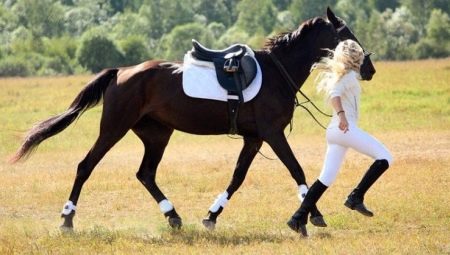
The horse on the farm requires special care, so it is so important to provide it with appropriate equipment. If the harness is selected correctly, taking into account the individual characteristics of the animal, then the process of getting the horse to the owner will be faster.
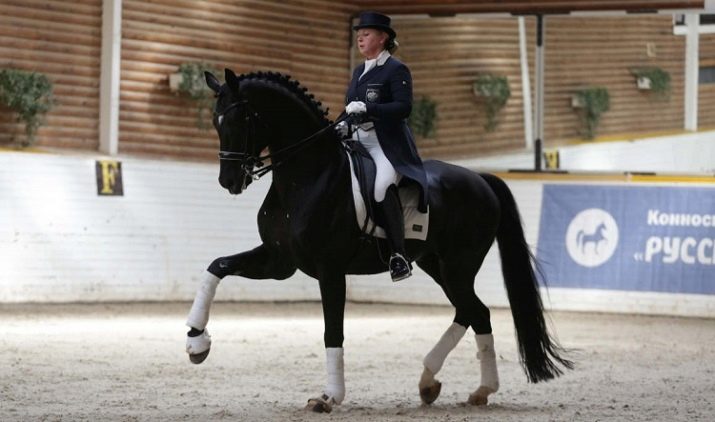
What do you need to manage?
Today there are no problems in order to purchase high-quality ammunition for a horse, regardless of the area where it is supposed to be used. Halter, bridle, chambon, saddle and other accessories - all this is horse harness. Everything you need is in specialized stores. When choosing a kit, you need to understand that any quality horse harness must be versatile. It is desirable that some parts can be replaced as needed.
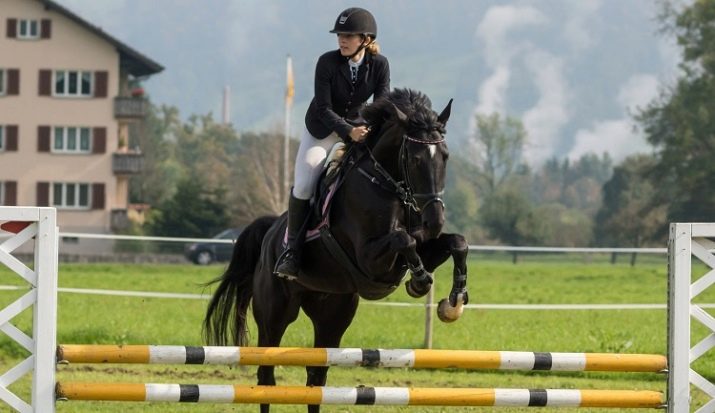
Riding equipment includes the following items.
- Halter. This device allows you to train your horse. This type of headband is a bridle, but the kit is not complete. It is used to provide the necessary control of the horse or when it is necessary to saddle it. Putting it on, it is more convenient for the owner to work in an open space. At the same time, the animal's mouth is not busy with anything, so it can graze. The halter consists of a capsule, chin, cheek and occipital girdles.
A rope halter is used to train especially sensitive horses. It is soft, does not injure the horse. The round nodules in the structure create pressure, easily acting on the horse's skin and forcing it to turn its head to where the owner wants it.
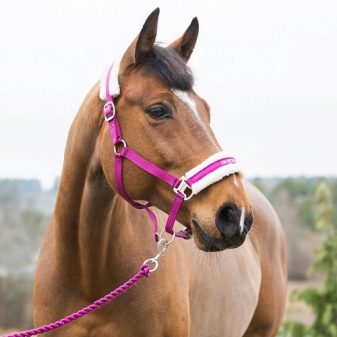
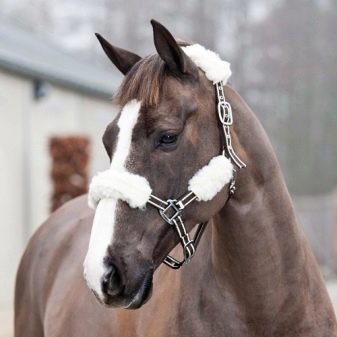
- Stirrups. They are part of the saddle structure. It is necessary for the rider to place the legs in a fixed position while riding the animal.The stirrup allows you to maintain the necessary balance. Many decades ago, this element was in the form of loops, which is not entirely convenient and unsafe.
Today they are made of metal and have a well-thought-out shape.
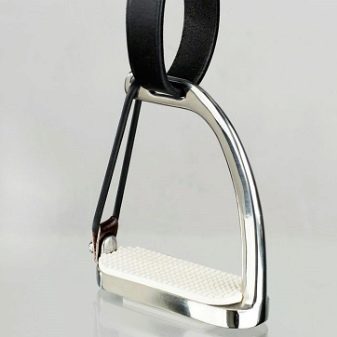
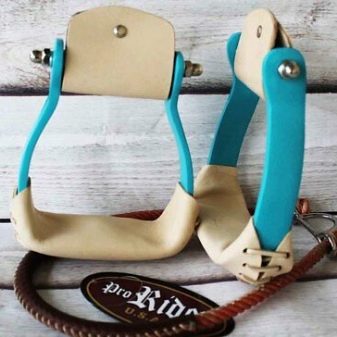
- Bit... Controlling a horse is simple, the bit plays an important role in this. They are inserted into the edentulous edge of the gum and allow the animal to be rotated. The design is very simple and consists of two gnawed rings. With a little tension, the animal knows whether to stop. This element is acquired taking into account the individual characteristics of the horse. Not always an attractive design means that the bit will fit the horse.
If it does not fit in size, then the animal will experience discomfort, mouth and cheeks may be injured.


- Whip... Many breeders forget that this is not a basic device, but an auxiliary one when driving a horse. The whip is needed to strengthen the command from the rider, nothing more. It can be used with great restrictions in most competitions.
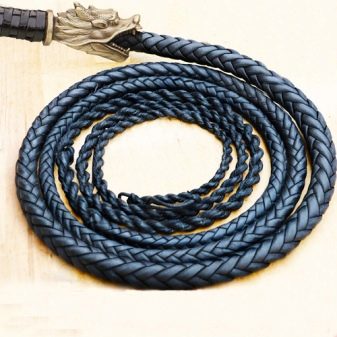
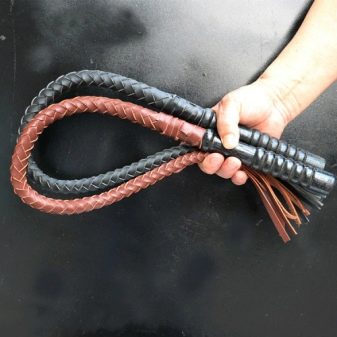
- Put-ups. This element is a small strap through which the stirrup is attached to the saddle. It is made of soft leather, the color may be different. The lock in the design of this product is fixed, its location is lower than the human calf, therefore there is no discomfort during the trip.
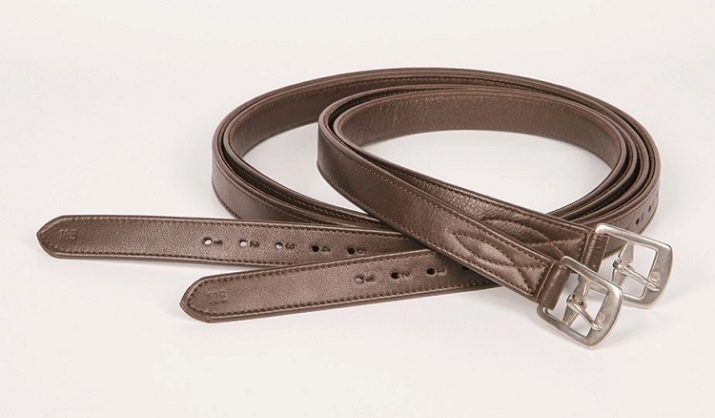
- Saddle bag. More an accessory than a necessity. It is made of various materials, usually has a rectangular shape so that it fits well on the horse's body.
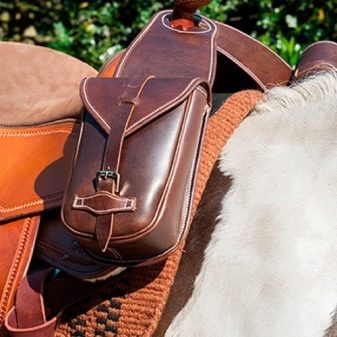
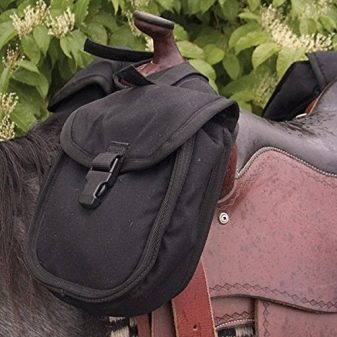
- Occasion. Most often it is made of leather, since this material can withstand stress perfectly. The belt attaches to the bit rings.
Through it, contact between the rider and the animal is ensured, control over it and control over the direction of movement.
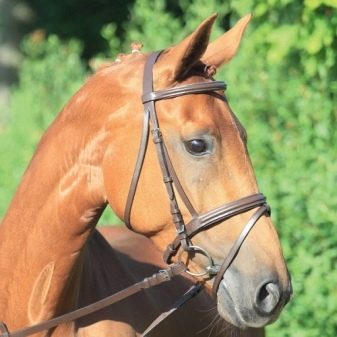
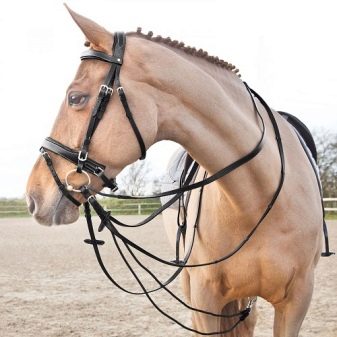
- Martingale... This element prevents the animal from throwing its head up, thus, the rider is protected from being hit by the back of the horse's head. Attach the martingale to the girth, in the chest area it is divided into several belts equipped with rings. The reins are pushed through the rings, limiters are placed closer to the gland.
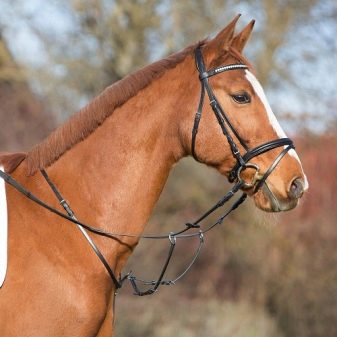
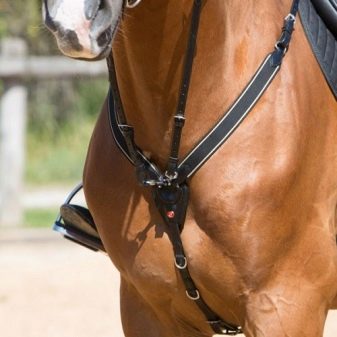
- Chambon. This is one of the solutions used during the training process. Thanks to her, the head of the animal remains in a fixed position. The element is attached to the gland and girth, then it lies under the headband, namely, with a cheek strap.
Chambon does not prevent the horse from stretching its head like a martingale, and with its help the excess load is removed from the animal's back.
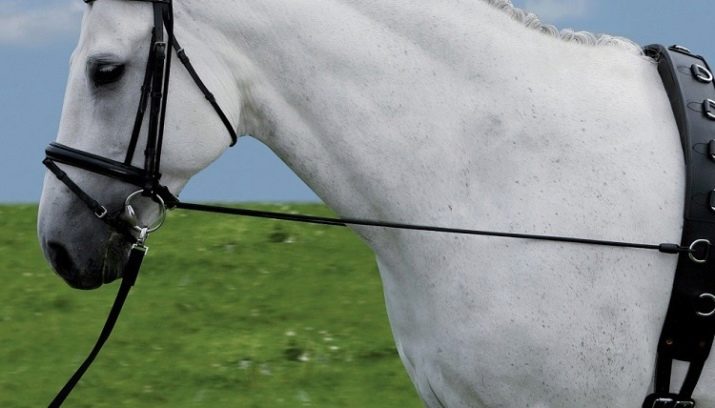
- Saddle... It is used not only for the comfort of the rider, but also to protect the horse's back. With the right design, the rider's weight is evenly distributed. For each horse, this piece of ammunition should be selected individually, taking into account the height of the withers of the animal, the length of the horse and other parameters. Saddles are different: ladies', westerns, English. There are Asian saddles and Spanish saddles for sale. Saddles differ from each other depending on the purpose for which the horse will be used.
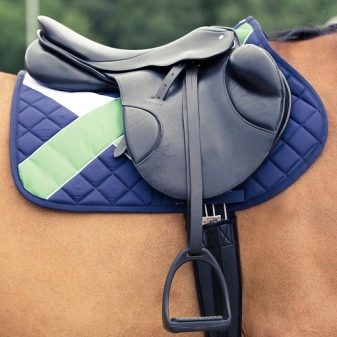
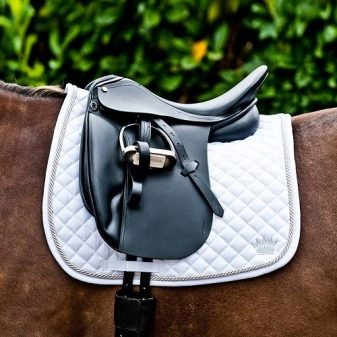
- Spurs. An element that the rider wears on his feet. It is necessary to enhance the impact on the horse. Spurs of various designs are produced; recently it has been banned to use those that have wheels, since they cause severe harm to the animal.
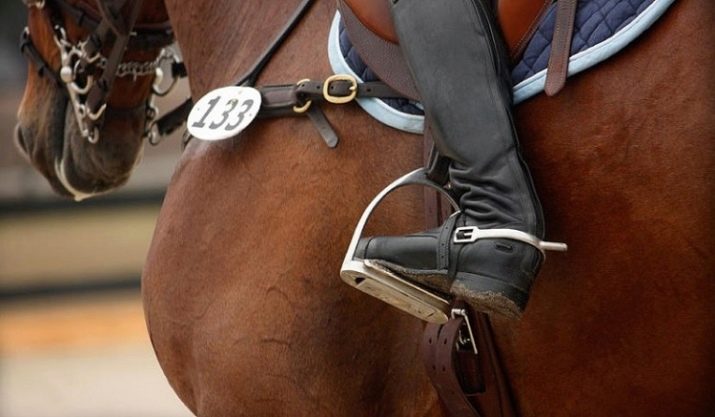
- Bib. Allows to provide the necessary safety and stability while driving a horse. This element prevents the saddle from sliding back. In order for the bib to perform the assigned tasks, it must be properly fitted. There are several types: 3- and 5-point, hunting, covering the chest, and jumping elastic.

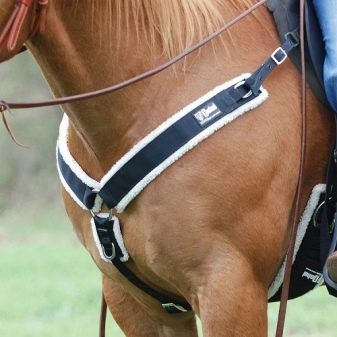
Protective accessories
There is a wide range of horse protection accessories that must be purchased as well.
- Gurta. This item is purchased exclusively for riding a lanyard or for hippotherapy. The manufacturer specially makes an anti-slip coating to make the rider more comfortable. The design has leather straps and roller buckles.
A conveniently located handle helps to keep the horse on board.
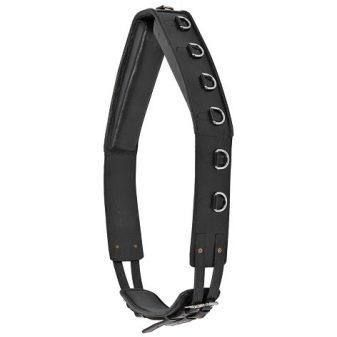
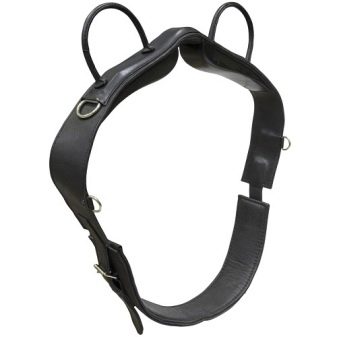
- Blinders. They are also called shields or eyecups. These are small plates that are installed near the eyes of the animal. They must not only protect them from branches and dirt flying from under the hooves, but also limit the view so that the animal is not frightened.
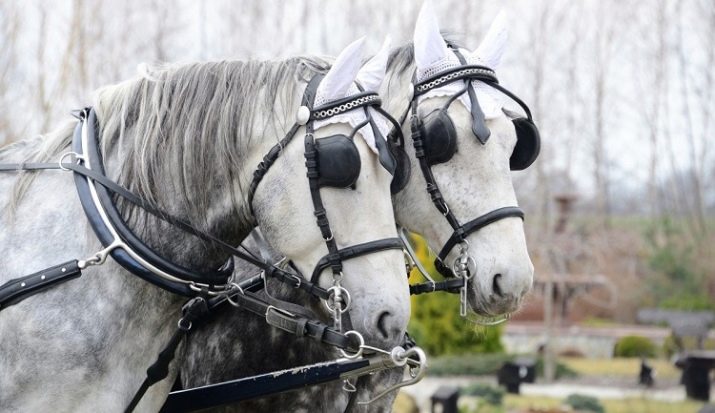
- Headband. Part of the bridle. It is needed as a retaining component to keep the headband from slipping. The forehead is made in the form of a leather strip, which performs exclusively a working function.
Recently, beautiful models with colored inserts have begun to be made, so that the element additionally performs an aesthetic function.
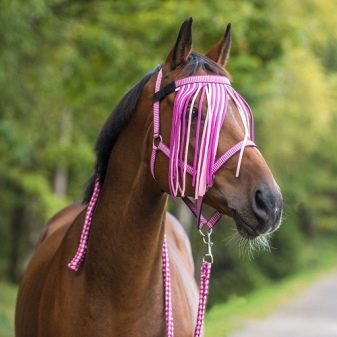
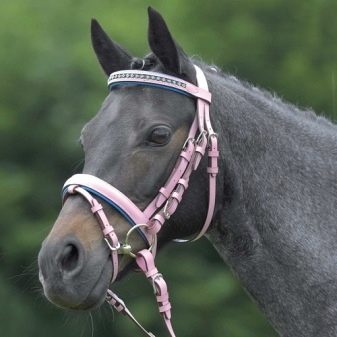
- Sub-tail. A very important element of the horse's equipment, thanks to which the saddle does not go forward.

- Blankets. A useful invention for increasing the comfort of an animal. Most often used when the horse is transported in winter, with sudden changes in ambient temperature. In the manufacture, a woolen cloth is used, which has a special warming effect. Fixed with straps and buckles. The product is sewn taking into account the physiology of the animal and the climatic characteristics of the region. It can be night, walking, winter.
Even so-called raincoats are made.

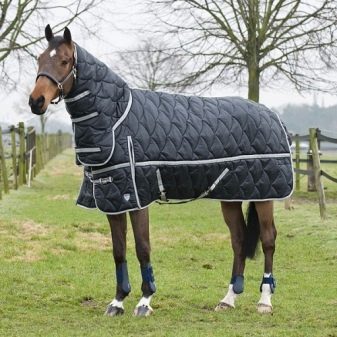
- Bandages. The main material used for sewing this product is cotton fabric. It is she who is able to provide the tendons and joints with appropriate protection. With the onset of cold weather, they are used as a means of insulation. During training, bandages made of jersey are wrapped around the horse's legs, they can also be crepe. The width of each product is 80 mm.
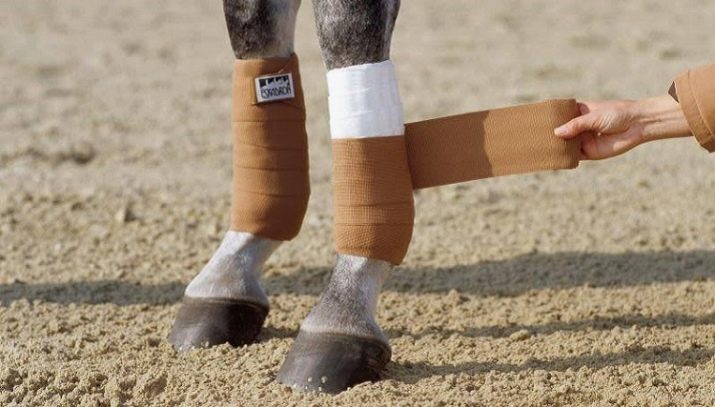
- Boots. An accessory that is also used to protect the legs of the animal. Most often they are worn over bandages, less often - just on the pasterns. Fasteners or Velcro are used as fixing elements.
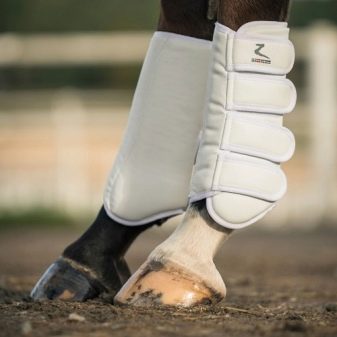
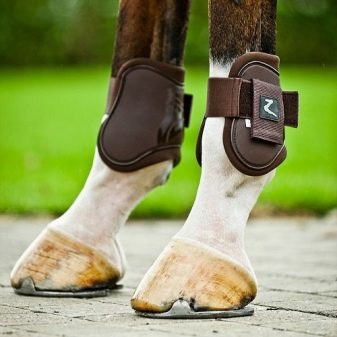
- Saddlecloth. This product is placed on the back of the animal before the saddle. The main function that the saddle cloth performs is protective. It is made of cotton fabric with the subsequent use of filler.

Types of harness
The harness is necessary to provide comfort not only to the rider, but also to the animal. The owner shows that he is in a pair of dominants, harness makes it easy to control the horse, without additional coercion, the animal is under control.
The harness may include blinkers on the eyes, sometimes they are absent, it all depends on how the animal is used. During the competition, this accessory has a special meaning because helps the horse focus on the task at hand.
Reins, girth and other elements are selected individually. More often, the owner takes into account the individual characteristics of the horse and other factors. Equestrian equipment has its own classification, for example, there is a harness for working in the field, sports and competitions, or organizing a carriage.
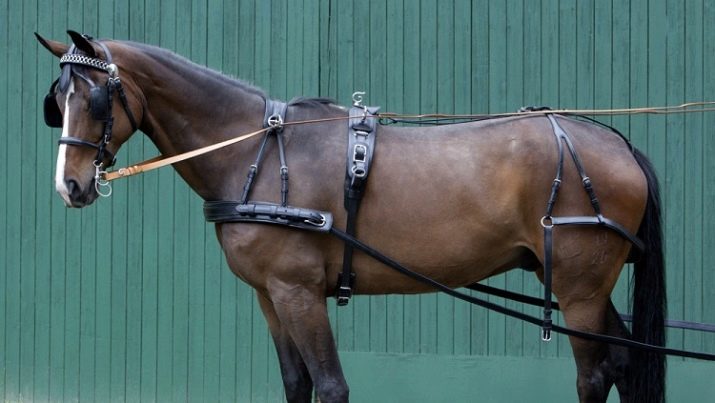
If we take into account the number of horses harnessed, then the harness can be:
- single;
- steam room;
- multi-horse, when there are from 3 to 8 knights in one bundle.
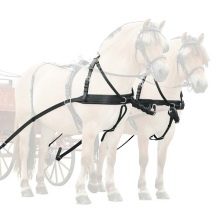
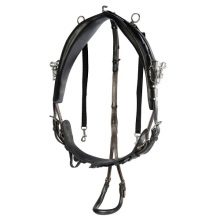
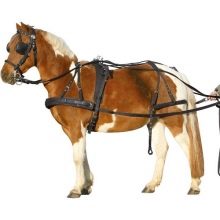
The way of harnessing is also a determining factor and constitutes a separate classification.
- Single-arched. It is easy to guess that only one animal is put into the harness. The design uses a wooden arch, and in addition, horse-drawn vestments.

- Threatening-post-edge... The structure uses the same elements as in the previous case, only there is no arc. The leading role here is assigned to the harness, while the shafts are small in size, and they themselves are attached to the saddle, and not to the clamp.
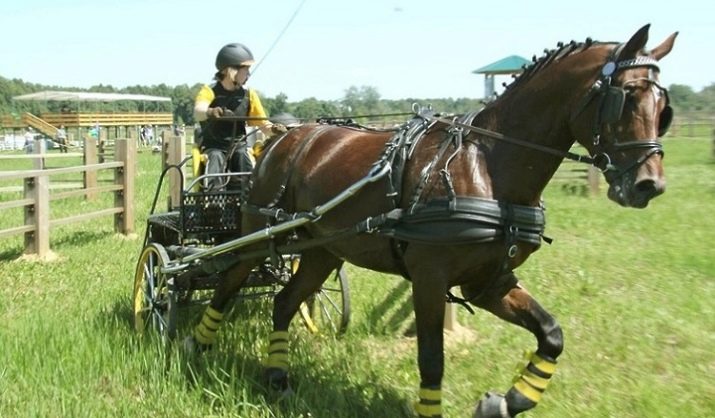
- Line-by-line and drawbar. The main role is played by the drawbar, which allows unhindered control of the vehicle. With it, the horse easily turns in the right direction. This design is allowed to be used not with one, but with two animals at once.
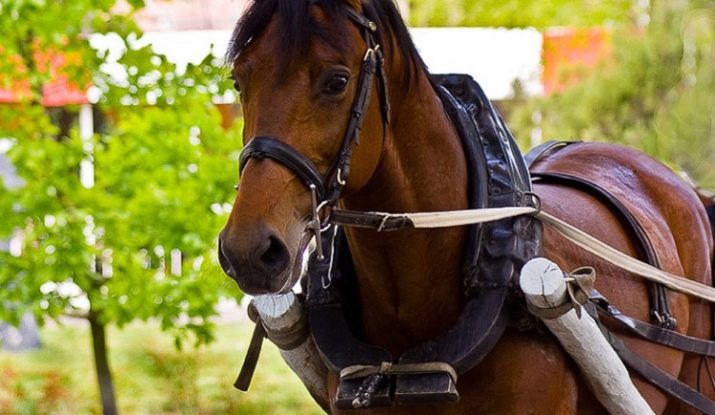
- Post-line. A simple option in which shafts and an arc are not provided.The whole structure is secured by a clamp, as well as a belt system. It is not uncommon to find this type of harness with a hand brake, since it is not easy to make a horse that has accelerated strongly to stop using another method.
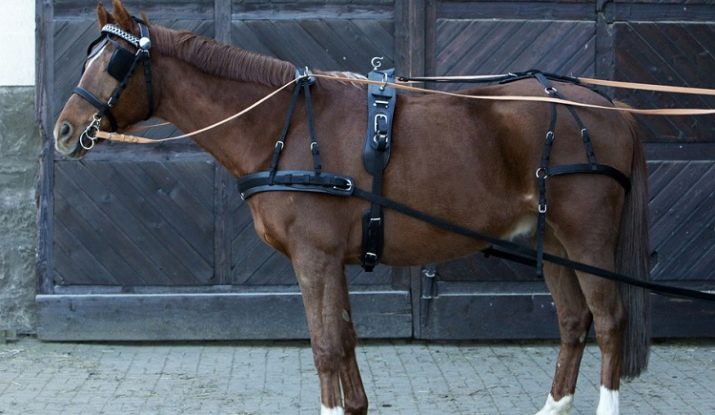
- Tachanochny. A type of harness that is outdated. It was used to harness 4 horses at a time. In the middle, a pair of horses are harnessed using a drawbar, and those that are located on the sides are harnessed with strings.
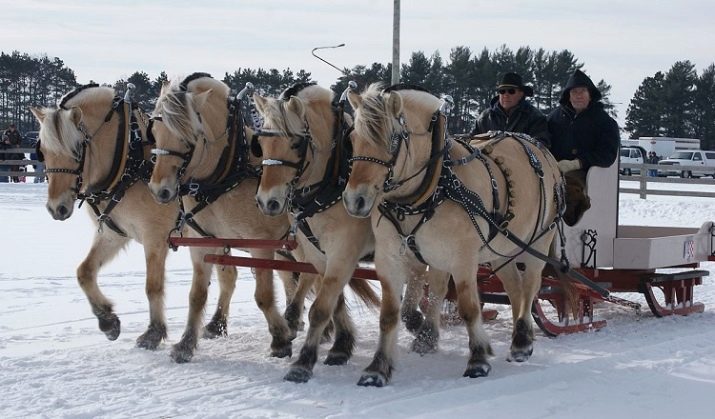
- Combined... The main area of destination is the harnessing of a large number of animals. The design has a post, a shaft and a drawbar.

- Zugovy. Ideal for six horses, four of them are harnessed to the drawbar, the side ones - by strings.
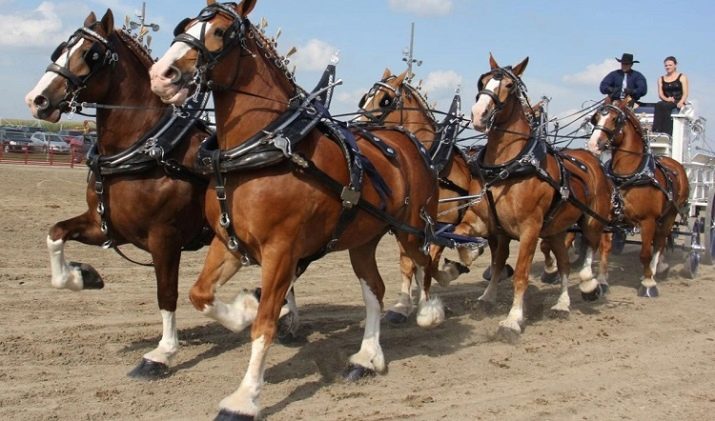
How to choose?
There are basic rules for choosing equipment for a horse that are worth listening to.
- Necessarily taken into account animal temperament... If the horse is not aggressive, calm, then you can purchase thin and hard bits. For active horses, it is better to buy soft equipment.
- Clamp is not selected by eye, the width and length of the animal on the back must be taken into account. You need to understand that the clamp is used differently for harnessing in a cart and performing work in the field.
- By purchasing arc, the main focus should be on structural strength and resilience.
- Rein can be both integral and composite. The latter are used when several animals are in the harness.
- From quality The horse's performance also largely depends on the selected equipment, so you shouldn't save on accessories.
- When buying a tie-down horse, its weight should be less than that used on the rump horse.
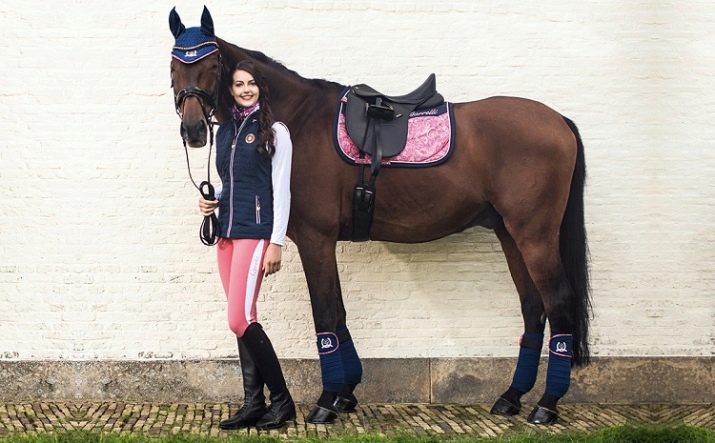
Care rules
If the owner of the horse watches over its harness, then it can serve for a long time. The better the harness is cleaned, the less likely it is to harm the animal. Considering the fact that most of the items are made of leather and fabric, the place where they are stored must have an appropriate microclimate.
It should not be too humid inside the pantry or room, as the material quickly decays. If it is too dry, the skin becomes hard, unpleasant to the touch, and can scratch the horse's skin. Felt parts are very fond of moths.
To normalize the microclimate, water should be placed in a room where it is too dry and ventilated if there is high humidity.
It is important to take out and ventilate the ammunition in the spring - this is exactly the time when the moth begins to lay eggs.
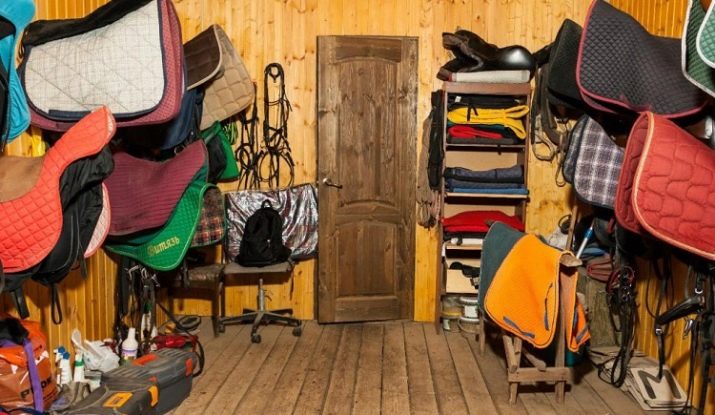
The harness must be not only clean but also oiled. From horse sweat and dirt, it hardens, tears. They hang it on wooden structures, but iron hangers are completely inappropriate, as they become covered with rust over time and spoil not only the appearance of the equipment.
Particular attention is paid to those elements that come into contact with the body of the animal. After working with the horse, the harness is first cleaned, only after that it is hung to dry. In winter, it can be difficult to do this in a stable, so special dryers are equipped or other heated storage rooms are used. In the summer, you can simply hang it out on the street, but it is also important not to overdry the leather material, because then it loses its elasticity and tears quickly.
Felt elements can be tapped with a stick, the girth is softened by hand. Leather products are specially lubricated so that they do not harden and do not get wet in inclement weather. To do this, you can use a special lubricant, it is allowed to use ghee horse lard, to which birch tar is added. You cannot use grease and autolol - they spoil the product.
Grease is applied only after high-quality cleaning of the harness.

If it is necessary to punch additional holes in the belts, don't do it with an awl or knife. The design will not be damaged only if you use a special punch.
Rings, buckles and other metal parts also need to be protected from rust. To do this, first of all, they are wiped with kerosene, then with a dry piece of cloth and then any fat is applied.
Sometimes you will notice that the felt elements are sheathed with canvas. In this case, after repeated contact with the body of the animal, they become hard until they are cleaned and dried.
This is why it is important that there are no knots or rough seams on the surface, as they can injure the animal.

For an overview of horse ammunition, see the next video.








